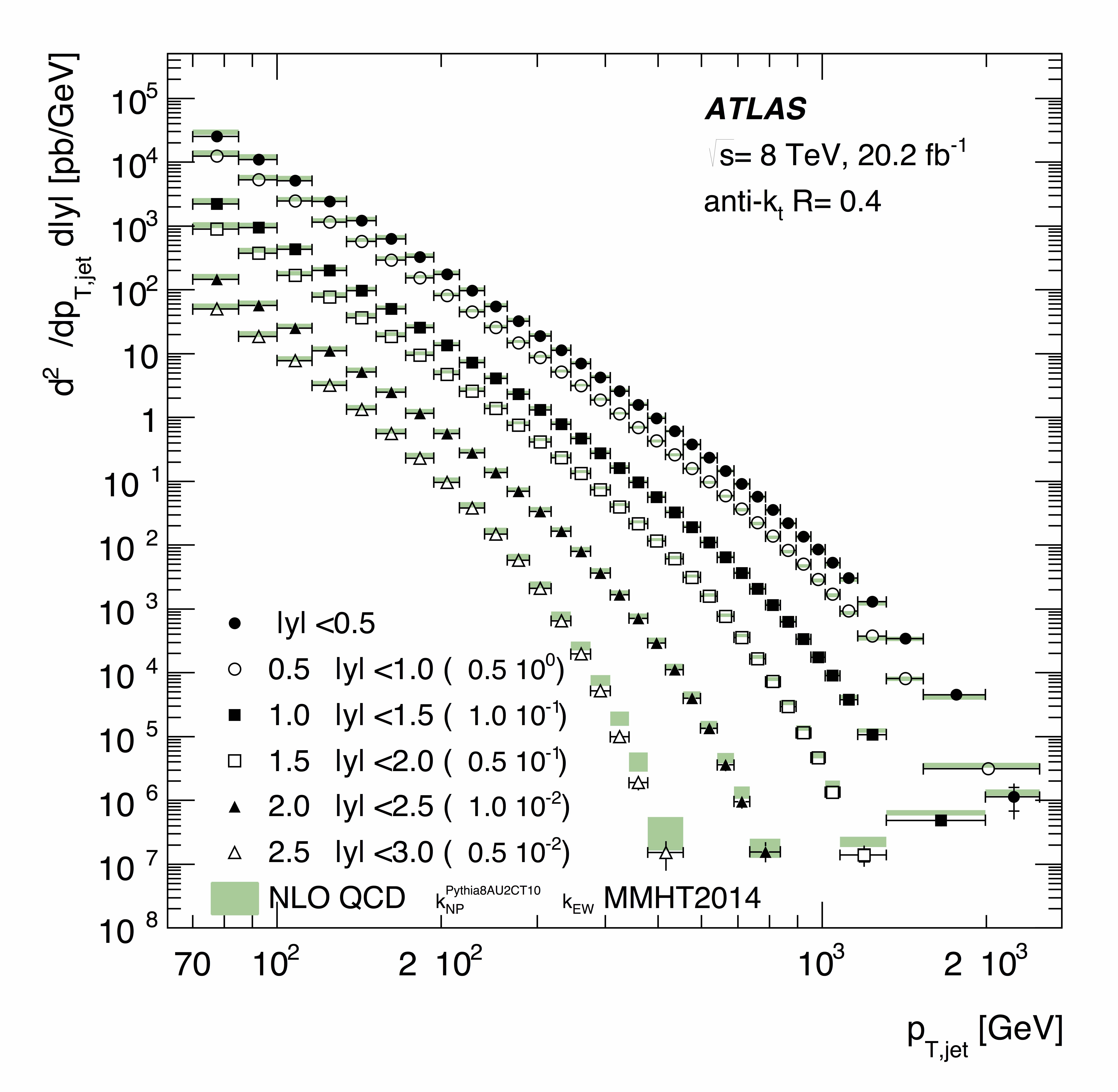More than the sum of its parts: inside the proton
13 June 2017 | By

Discovered almost 100 years ago by Ernest Rutherford, the proton was one of the first particles to be studied in depth. Yet there’s still much about it that remains a mystery. Where does its mass and spin come from? What is it made of? To answer these questions, ATLAS physicists are using “jets” of particles emitted by the Large Hadron Collider (LHC) as a magnifying glass to examine the inner structure of the proton.
The proton structure and its dynamics are described by the theory of strong interactions, quantum chromodynamics (QCD). It depicts the proton (and other hadrons) as a system of elementary particles, in this case quarks and gluons. QCD explains how these quarks and gluons interact and, consequently, what emerges from high-energy proton–proton collisions at the LHC.
One of the remarkable features of QCD is that quarks and gluons cannot be observed as free particles. Instead, they always bind to form hadrons. QCD also predicts that “jets” of hadrons produced in LHC collisions will fly away from the interaction point in a few distinct directions. These directions correspond to those of the original quarks and gluons.
The probability of observing a jet with certain kinematic properties (called a "cross section") can be calculated in QCD. There is a higher probability of producing a jet with a low transverse momentum than producing a jet with high transverse momentum.
The ATLAS detector measures jets across a wide range of transverse momenta, with the production rate varying by more than 10 orders of magnitude. Billions of jets with a transverse momentum of 100 GeV have been detected, yet we have so far only seen a few 2 TeV jets. A remarkable success of QCD is that it is able to describe this wide range of energies so accurately!
In a recently released paper, ATLAS physicists counted how many jets of a given transverse momentum there were in the 2012 data. This was then compared to several theoretical predictions and found to be in agreement. These results are expected to constrain parameters of the proton structure.
Links:
- Measurement of the inclusive jet cross-sections in proton–proton collisions at 8 TeV with the ATLAS (arXiv: 1706.03192).
- See also Particle-hunting at the energy frontier (Physics Briefing, 20 March 2017) and Constraining Quirky Tracks with Conventional Searches (arXiv: 1703.00912)
- See also the full lists of ATLAS Conference Notes and ATLAS Physics Papers.



